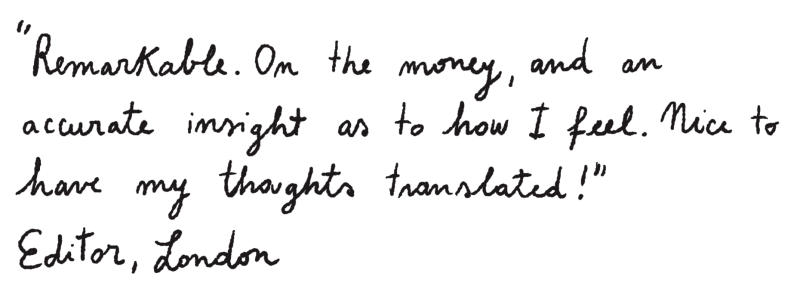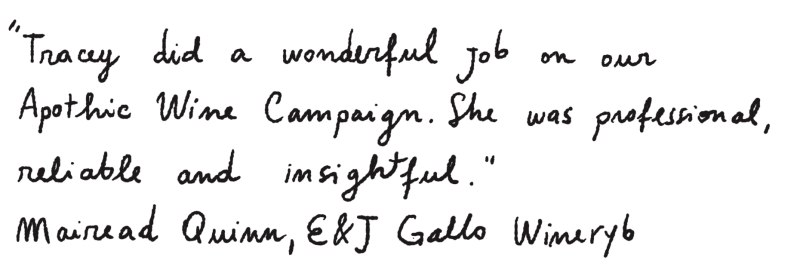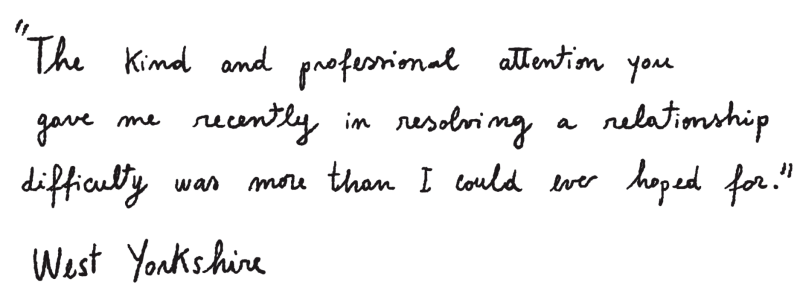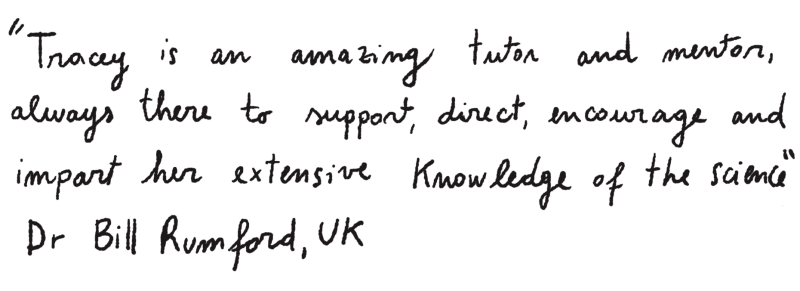As a fully qualified practising graphologist (and accredited tutor of the British Institute), I analyse handwriting to uncover what it says about the person behind the writing. From just a few handwritten sentences, my work reveal people’s core personality and their fluid behaviour – how they think, feel, and operate – shining a practical light on a broad spectrum of issues that confront us all every day.
This taster article explores how handwriting analysis works, and how my insightful, far-reaching, and diverse reports can help people – from talent resourcing and recruitment, to dating and compatibility, and from personal self-discovery to pinpointing mental health issues.
I have been fortunate to be in great demand with the press over the years, analysing an assortment of celebrity signatures and their handwriting, and just a few months ago I also had a double page centre spread in the Daily Mail newspaper. My list of business clients is wide and varied, ranging for example from PR companies to Franchises to Dating Agencies to Hotel groups to Art Galleries to well-known Pen companies and to the Royal Mail. On a more personal level, I’ve compiled personality snapshots (for adults and children), compatibility reports, and analysed suicide notes for the recently bereaved, to name a few.
- WHAT IS GRAPHOLOGY?
You see handwriting as a way of communication, because you naturally read the content. But for me, the content is irrelevant, because I am looking at handwriting as if it’s a picture.
Handwriting is the complex interaction between the eye, the brain (and hence the central nervous system), and the hand. The pen we hold is merely the conduit. In layman’s terms, this means that handwriting is the same as brain writing. And graphology is the analysis of the brain’s subconscious expression through the medium of handwriting. Or put in simpler terms, it’s the study of handwriting to reveal the personality of the writer.
Basically, whilst you’re reading the content, I’m analysing and deciphering the symbols on the page. As a trained graphologist, I’m very fortunate to have, in black and white, the unique pattern of our psychology expressed in symbols on the page.
- WHY WOULD YOU WANT TO USE GRAPHOLOGY?
Curiosity perhaps? It’s always fascinating taking a peek inside someone’s head. It’s gives you an unfair advantage if you know how someone ticks. But actually I use graphology to empower my clients to make the right decisions in every aspect of their daily lives.
As I have already touched on, this can be both Personally and Professionally. My areas of specialism are wide, encompassing the whole spectrum of issues that confront us all every day: For example,
- For hiring the right talent. We all know that in interview situations candidates are keen to present the best version of themselves. So I help my clients to see behind the veneer of professionalism
- For assessing Potential and Motivation
- For uncovering employees ability to deal with Stress
- To get a handle on the interpersonal dynamics within an office, and perhaps see if a new member of staff will slot seamlessly into their new surroundings and work well with their colleagues
- To explore self awareness
- For fun company workshop events
The list is endless, and no two commissions are ever the same. Whatever my client needs to know about their people, graphology, applied correctly, provides the answers. It’s a completely non-invasive and non-discriminatory procedure.
- WHAT DOES GRAPHOLOGY DO? WHAT CAN IT TELL YOU? HOW MUCH DOES IT REVEAL?
Graphology is a highly effective tool that uncovers personality to reveal all manner of things – core character, fluid behaviour, proclivities, strengths and areas for development, skill sets, ability to deal with stress, interpersonal skills, potential and motivation. Actually, it would be quicker and easier to tell you what it doesn’t do:
Graphology doesn’t tell you the writer’s age – only their mental age. Graphology doesn’t tell you if they’re male or female – because it’s looking at your soul. And it doesn’t tell you if someone is right or left handed, and that can be vital, so the graphologist doesn’t make any mistakes in their interpretations, particularly for left hand writers. Last, but not least, graphologists can’t see into the future. (I can tell you someone’s propensity to behave in a certain way, given a particular set of circumstances, but I’m not a witch!)
- SO, HOW DOES GRAPHOLOGY WORK?
I was recently the guest speaker at a luncheon, where I invited the audience to all do a little bit of handwriting for me. I explained that I only needed a couple of sentences – enough to compare and assess the unique style of peoples writing. I asked everyone to sign their samples at the bottom, and indicate if they were male or female, their age, and whether they were right or left handed. I also asked for a smattering of personal pronoun I’s, reassuring everyone that the content didn’t matter. I would be purely interested in looking at the way the letters or shapes had been formed, the layout and spacing on the page, and also the pressure applied. This is a collage of anonymous extracts of handwritten samples produced on the day (see below).
I invited everyone to look at the writing of the person sitting next to them, and asked if they thought it resembled their own handwriting. But they all agreed that everyone’s handwriting was different and unique. So I explained why this was:
“Do you remember back to a time when you were very little, and at school? The interesting thing is we were all taught to write, and we were all taught to write exactly the same way. In fact, we were given a template to copy. And yet we’ve all developed our own style of writing to the extent where we can say that our handwriting is unique to us. Very few people’s handwriting stays the same.”
The reason is because people mature (hopefully) and the pattern of their evolution is reflected in their symbols on the page. It’s also because life happens – things rarely run smoothly, so very few people get through life with a completely clean slate and don’t experience any ups and downs, trials and tribulations – and these changes also affect us, and again they are mirrored in our handwriting.
So, what I’m doing, as a graphologist, is looking at the deviations from the way we were taught to write in school. And all those little deviations add up to make a picture of the writer. We don’t have enough time in ten minutes now to cover all the various movements – worksheets detail in excess of 80 potential deviations from the copy model. So, I’m just going to say a few words about our signature, and then I’ll take any questions, and we can have a look at some of your samples.
This is the premise that graphology is built on.
- A WORD ON YOUR SIGNATURE IN BUSINESS
Your signature is a very individual trademark of identity. It recognises that as no two people have the same handwriting, then signatures can be legally binding for all types of important documents. Handwritten signatures have been around since the sixth century, and before that practise, wax seals or cutting the lock of hair were more commonly used. Artist’s signatures became prevalent during the Renaissance, at a time when individual creativity was being celebrated. Their signatures became a part of the artistic process. Today we think more of our signature as our public image, as the face we show to the world. Still, like taking a peek inside a shop window, your signature reflects your inner desires.
If you want to know what someone is really like, you would need to see their natural handwriting, rather than just their signature – which is merely a pose. Where it becomes interesting, is when you compare someone’s signature with their handwriting. The differences reveal how they would like to be perceived, and how they really are! So, if your handwriting is exactly the same as your signature, then basically you know that the writer does what it says on the tin.



